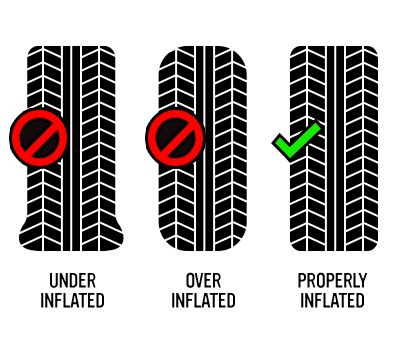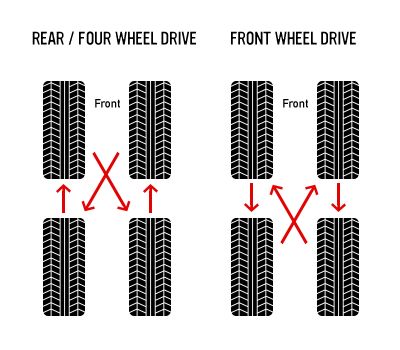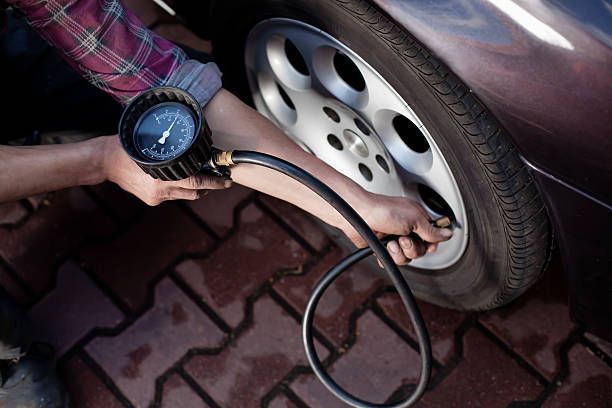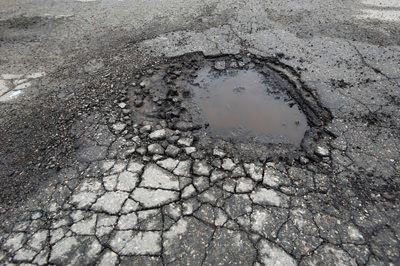Jake Taylor

Tire care is a topic often overlooked by drivers. Whether your car has stood the test of time or is brand spanking new, performing tire maintenance can greatly improve your driving experience in terms of both saving some money and enhancing the safety of your vehicle.
Read on for some practical information on proper tire care. Get a grip on how to test your tire's tread depth and read a “wear bar.” Make sure that you know what the proper tire inflation is and why it matters. Learn what tire alignment can do to improve the safety and life of your vehicle. Lastly, we will wrap it up with a bit of tire rotation.
Tire Tread Depth
We all know the old penny test, right? Lincoln's head is a time-tested way to quickly discern whether you need to replace a tire or not. Of course, once you identify a tread that has been worn down, it is time to get your tires checked out professionally or changed immediately.
There are two simple tests you can perform with United States' coins that indicate different levels of tread depth.
The first is the classic Lincoln penny test. Place a penny with Lincoln's head facing toward the tire. If you can't quite see his entire head of hair then you have more than approximately 2/32” of tread depth remaining.
If you only have a quarter on you, Washington can be a fine substitute. If you perform a similar test with the quarter and the top of Washington's wig is covered by the tire, there is more than 4/32” of tread remaining.
The legal standard in most states is that tires are legally worn out when they have worn down to 2/32” of tread depth remaining.
There is a feature on your tires called a “wear bar,” which is a small raised piece of rubber that connects the raised part of a tire's tread. If the tread has worn down to these bars, the tires must be replaced.
Tire Tread Depth: Why Does It Matter?

Similar to the sole of a shoe, as you use tires and wear them down, the tire will begin to lose its traction on the road. In general, a lower tread depth will simply lead to overall worse tire performance.
When you have reached the threshold of 2/32” tread depth remaining, you need to know that your ability to drive in the rain has been greatly reduced (especially at highway speeds) and that driving in snow is virtually impossible. As a rule of thumb, the worse the conditions you are driving in, the sooner your tires will need to be replaced.
Tire Pressure
Have you ever noticed your car's handling feel especially stiff or ridiculously soft? Chances are that your car's tires are improperly inflated. Improper inflation has a number of symptoms that differ depending if the pressure is over or under the recommended tire pressure.
As a side note, if you do not know what your tire's pressure should be, refer to your owner's manual. Sometimes this information is on a sticker in the glove box itself or along the metal where your car door meets the bar as it closes.
Having properly inflated tires presents a number of benefits that save you some cash:
- Improved fuel economy
- Increased handling and safety
- More responsive braking
- Higher general ride quality (e.g. going over bumps will be less intense)
Underinflated Tires
In a tire with 29 psi recommended pressure, it is not uncommon to find that they may be underinflated by about 6 psi. This may not sound like a huge amount but consider that this is almost 20% of the tire's recommended pressure missing.
You may find the following plaguing your drive if your tires are underinflated:
- Your car seems unresponsive or sluggish when turning
- The tires of your vehicle feel softer and slower than before
- Gas economy will be decreased
Tires deflect, or bend, as you drive and build up heat, which will increase the resistance that your tires face on the road. This means that more energy is required for you to maintain a constant speed and can lead to nearly 5% reductions in fuel economy.
Underinflated tires also have their tread life reduced by up to 25%.
Overinflated Tires
On the other hand, overinflating tires also presents a couple of huge problems.
Bumps and road obstacles feel particularly hard or intense, which can be a distraction while driving and also contribute to wear and tear on other parts of your vehicle such as the axles and steering column.
The tire's footprint, or the part in contact with the road, is reduced with overinflated tires. This means that turning or running over a curb can be especially harmful over time. If you imagine a really tough rubber balloon getting too full that is a good metaphor for overinflated tires.
Tire Alignment
Proper alignment along with making sure your tires are correctly inflated can greatly increase the life of your tires. Avoiding potholes, general obstacles, driving over curbs, and not getting into accidents is the best way to prevent your car from getting out of alignment. Check your tire's warranty information and have your tires inspected when you approach the warranty's threshold, if not before. Tire health is affected by mileage, service, maintenance, and storage. It is important to know that no guideline is tire law, if you see visible signs of wear or check your tread and it is below 2/32", have your tires inspected. It is best practice to get your alignment checked at the same time or after an accident or tire replacement.
If your car is out of alignment, there are a variety of maladies that you may experience while driving, including:
- Vibration of your car or steering wheel
- Car drifting actively, which means it drifts even when you hold the wheel
- Car drifting passively, which means it drifts only when your hands are off the wheel
- Tires wear unevenly
- Steering wheel is crooked when your wheels are straightened out
A properly aligned vehicle will have improved handling and feel better over obstacles and other adverse road conditions. It also helps reduce wear on the steering column and other components of the car. Last but not least, you get better fuel economy with a properly aligned car. Properly aligned vehicles require less energy to maintain their trajectory, which means that coasting is more effective on flat or downhill roads.
Tire Rotation
To understand why tire rotation is important, it is helpful to understand how weight is distributed among your tires. In rear or all-wheel drive cars, the weight distribution is generally close to 50-50 from front-to-rear. In front-wheel drive cars, the distribution is typically closer to 60-40 from front-to-rear.
This distribution, even in rear or all-wheel drive cars, can cause uneven wear of the tires from front-to-rear. Braking also applies additional stress on the front tires which leads to them degrading faster than the rear tires on a vehicle. Tire rotation aims to help remedy this exact problem.
Additionally, because we drive on the right side of the street in the United States, our right turns are sharper than our left turns. This causes the front left tire to take a larger amount of stress than any other tire on your vehicle and wear down faster.
So, what is tire rotation?
Tire rotation itself is a simple concept. You want to exchange where your tires are on your car to wear them out as evenly as possible. There are a number of different methodologies depending on whether your car is front, rear, or all-wheel drive. Also important to note is that high performance or sports cars often have differently sized front and rear wheel tires which makes front to back rotation impossible.
Below are two of the patterns used for rear and all-wheel drive cars versus front-wheel drive cars.
In general, it is recommended that tires be rotated every six months or every 6,000 to 8,000 miles. This is within the guidelines for many cars keeping their warranties as well. Most warranties on cars will require regular tire rotation in order to avoid problems simply from neglect.
These four basic tire maintenance tasks will greatly extend the life of both your car and your tires as well. Taking care of these things will also improve the handling and safety of your car, give you better fuel economy, and leave you feeling accomplished after taking care of the car you love.





